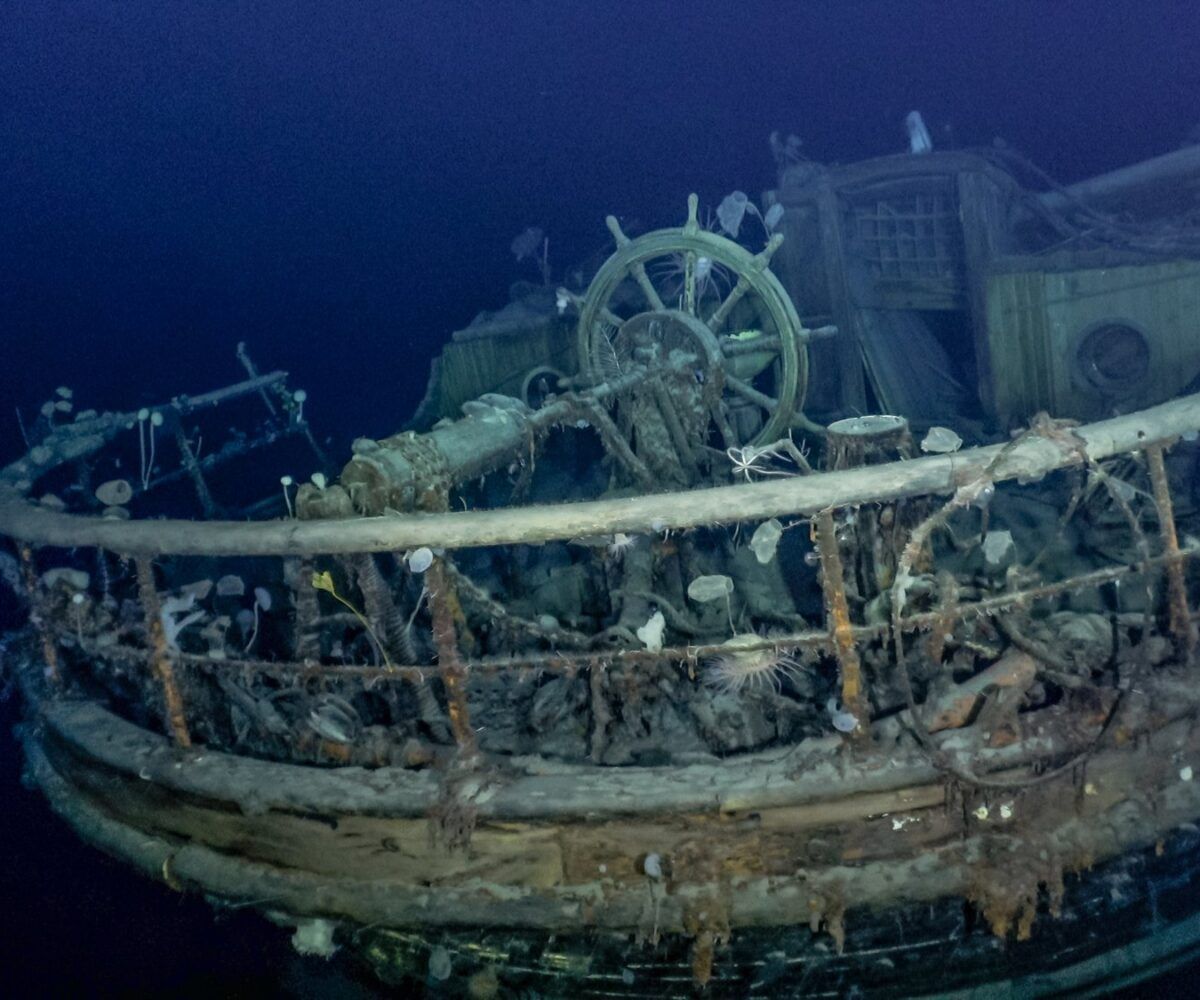Legendary Antarctic explorer Ernest Shackleton’s ship Endurance sank more than a century ago and its wreck lay undiscovered at the bottom of the Weddell Sea until March 2022.
RELATED | A ship that endured: ‘Ship-shape’ wreck of Shackleton’s Endurance found
Now, the team behind its discovery has joined forces with an Oscar-winning film crew for a new National Geographic documentary showcasing how they located the storied vessel’s last resting place.
“Endurance” features thousands of 3D scans shot by a 4K camera deployed to a depth of 3 000 metres. It premiered at the London Film Festival last weekend before its release in cinemas and then on Disney+.
The never-before-seen footage captures everything from a flare gun and man’s boot to dinnerware used by the crew and identifiable parts of the vessel.
“We were absolutely blown away,” Mensun Bound, the 2022 discovery team’s director of exploration, told AFP.
“We didn’t expect to see the ship’s wheel – the most emblematic part of the ship – just standing there, upright.”
History broadcaster Dan Snow, an executive producer on “Endurance”, called finding it in such a “stunning state” an “astonishing achievement”.
“No one’s ever found a wooden shipwreck 3 000 metres down in one of the most remote places on earth underneath the ice,” he said.
“It’s important because it is connected with this story of Shackleton and the 1914-16 expedition, which is one of the greatest stories ever told – a story of leadership and survival like nothing else.”
‘Takes the cake’
Anglo-Irish explorer Shackleton’s Imperial Trans-Antarctic Expedition was meant to make the first land crossing of the frozen continent.
But its three-masted timber sailing ship Endurance fell victim to the treacherous Weddell Sea, becoming ensnared in pack ice in January 1915. It was progressively crushed and sank 10 months later.
Shackleton, who died in 1922, described the site of the sinking as “the worst portion of the worst sea in the world”.
He cemented his status as a legend of exploration by leading an epic escape for himself and his 27 companions, on foot over the ice and then in boats to the British overseas territory of South Georgia, some 1 400 kilometres east of the Falklands.
“I do believe of all the great survival stories I’ve ever heard of, this one takes the cake because it involves so many people,” said Jimmy Chin, who directed and produced the new film jointly with Elizabeth Chai Vasarhelyi.
The husband-and-wife team behind Oscar-winning movie “Free Solo” saw the expedition organised by the Falklands Maritime Heritage Trust as a chance to “bring the story to a new generation”.
The documentary alternates between accounts of the original and the 2022 missions, as the modern-day explorers conduct dozens of fruitless deep-sea dives using a state-of-the-art submersible as a deadline nears to leave before winter sets in.
Bound recounted the various challenges the latter-day team faced, including technology, research and climate, with one thing reminiscent of what Shackleton’s men confronted.
“Ice, ice and ice,” he said, adding that the documentary clearly highlights “the brutality” of the conditions they faced.
“This is probably the most difficult project I’ve ever been involved in… it wasn’t called the unreachable Endurance for nothing, was it?”
‘Great payoff’
Expedition leader John Shears also said there was a “real parallel” between the two endeavours and that like Shackleton he was drawn to “the ultimate polar challenge”.
“More people have been into space orbit than have ever walked on the surface sea ice where the Endurance sank,” said Shears, who previously led an unsuccessful attempt to find the wreck in 2019.
Chin and Vasarhelyi said combining the two stories was challenging but they were complementary.
“The two stories, even though they’re separated by 110 years, speak to each other,” said Vasarhelyi.
“They both chronicle this fundamental human condition of the audacity to dream big… have ambition, coupled with the diligence, determination, the grit and the ingenuity to see it through.”
To tell the original story, they opted to use AI to capture Shackleton and six crew members’ diary entries in their own voices, based on other recordings.
The filmmakers also used restored and colourised photographs and film expedition footage taken by Frank Hurley.
But audiences must wait until the closing stages of the documentary to see the new imagery of Endurance – a choice Vaserhelyi admitted felt “terrible” but necessary.
“This was a great story with a great payoff, but you have to earn it, right?” she explained.
“What’s nice is that the film really plays as this introduction… and it builds to this amazing moment.”
By Garrin Lambley © Agence France-Presse
